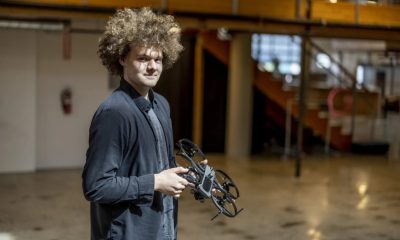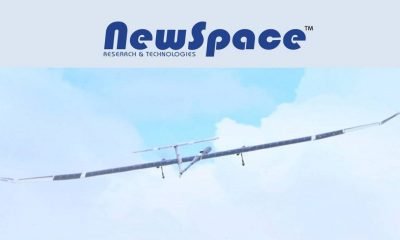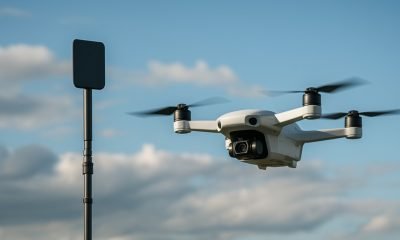Drone News
Object Recognition in the Drone Industry

Object Recognition in the Drone Industry Powered by AI
“Object Recognition in the Drone Industry” is not just a technological breakthrough, but a transformative evolution that is remolding the manner in which drones interact with the world. The advent of object recognition has enhanced drones’ capabilities exponentially, permitting them to identify, classify, and engage with their environment in a remarkably autonomous fashion. As this technological innovation evolves, its footprint is spreading across various sectors, revolutionizing their operational efficiencies and capabilities.
httpv://www.youtube.com/watch?v=MFS5oA–fBo
History of Object Recognition
Object recognition technology isn’t new; however, its application within the drone industry signifies a significant leap forward. Historically, object recognition has been utilized in areas such as robotics, where robots are trained to recognize and manipulate objects. Similarly, the technology has found applications in image and video processing software to detect faces, animals, or other objects.
Integrating object recognition in drones became viable with the advancement of artificial intelligence and machine learning, and the increased computational capabilities of drone hardware. This integration has enabled drones to move beyond being just flying cameras, turning them into intelligent machines capable of interpreting their environment.
The AI Technology Powering Object Recognition
Behind the transformative effect of object recognition in the drone industry is the innovative application of artificial intelligence (AI) technology. A combination of machine learning techniques, image processing, and advanced algorithms form the foundation of this exciting capability.
Machine Learning
At the heart of object recognition is machine learning, a subset of AI that enables systems to learn from experience. Machine learning models can be trained on large datasets consisting of thousands, or even millions, of images. By learning from these datasets, the models can start to identify patterns and distinguish different objects.
In the context of drones, these could be images of people, animals, vehicles, buildings, or any other objects the drone might need to recognize. The more data the model has to learn from, the better it becomes at recognition tasks.
Neural Networks
Deep learning, a more advanced form of machine learning, plays a crucial role in object recognition. Deep learning models, specifically Convolutional Neural Networks (CNNs), are excellent at processing visual data.
A CNN mimics the human brain’s neural network to analyze visual information. It processes an image in layers, with each layer identifying different features. The first layer might identify simple features like edges, the next layer might identify more complex features like shapes, and so on, until the network can recognize the object.
Image Processing
Image processing techniques help improve the quality of the input for the AI. These techniques can adjust the image’s contrast, filter out noise, and correct any distortion, enhancing the accuracy of the object recognition system.
Edge Computing
As drones often need to process data in real-time while in flight, edge computing plays a vital role in object recognition. Edge computing involves processing data on the device itself (the drone, in this case), rather than sending it to a remote server. This significantly reduces latency, allowing the drone to react quickly to its environment.
Implementation and Impact on the Drone Industry
Incorporating object recognition into drones has escalated the potential of these flying machines, having a significant impact on various sectors. For instance, in the field of search and rescue, drones can now swiftly scan vast expanses, identify individuals or objects of interest, and relay that information back to the operators. The result is a significant reduction in human risk and an improvement in operational efficiency.
Furthermore, in the construction and infrastructure sector, drones with object recognition capabilities are used for inspections, recognizing structural anomalies, damage, or wear and tear that can be missed by the human eye. This technology allows for early detection of potential problems, saving time, and preventing possible accidents.
In the environmental and agricultural sectors, drones use object recognition to identify plant health, species, and even pest infestations, helping farmers make more informed decisions about crop health and harvest timing.
Major Players and Utilization
Prominent drone manufacturers like DJI and Parrot are integrating object recognition capabilities into their drones. Meanwhile, numerous startups and research institutions are developing innovative applications for object recognition in the drone industry.
One such example is Skydio, an American drone manufacturer. Their drones leverage AI and object recognition to navigate complex environments autonomously, opening up possibilities for uses in surveying, inspections, and cinematography.
Similarly, research at institutions like MIT’s Computer Science and Artificial Intelligence Laboratory (CSAIL) is pushing the boundaries of what’s possible with object recognition in drones. They’re developing systems that allow drones to identify objects and understand their context, enabling more complex autonomous operations.
The Future of Object Recognition in the Drone Industry
The future of object recognition in the drone industry looks incredibly promising. As AI and machine learning continue to advance, the accuracy and reliability of object recognition are set to improve. This will allow drones to perform more complex tasks independently, reducing human intervention and increasing efficiency.
One future application could be in the field of package delivery. Drones with advanced object recognition could identify drop-off points, avoid obstacles, and even recognize individuals for secure delivery.
Another potential application is in the field of security and surveillance, where drones could autonomously monitor large areas, identify potential threats or unusual activities, and alert security personnel.
Conclusion
In conclusion, “Object Recognition in the Drone Industry” is not only revolutionizing the present capabilities of drones but also promising an unprecedented future. With each advancement, drones are becoming less of a tool and more of a solution, capable of handling tasks more efficiently and safely than ever before. As object recognition technology matures, its potential applications in the drone industry will only continue to grow, changing the landscape of numerous sectors in its wake.











